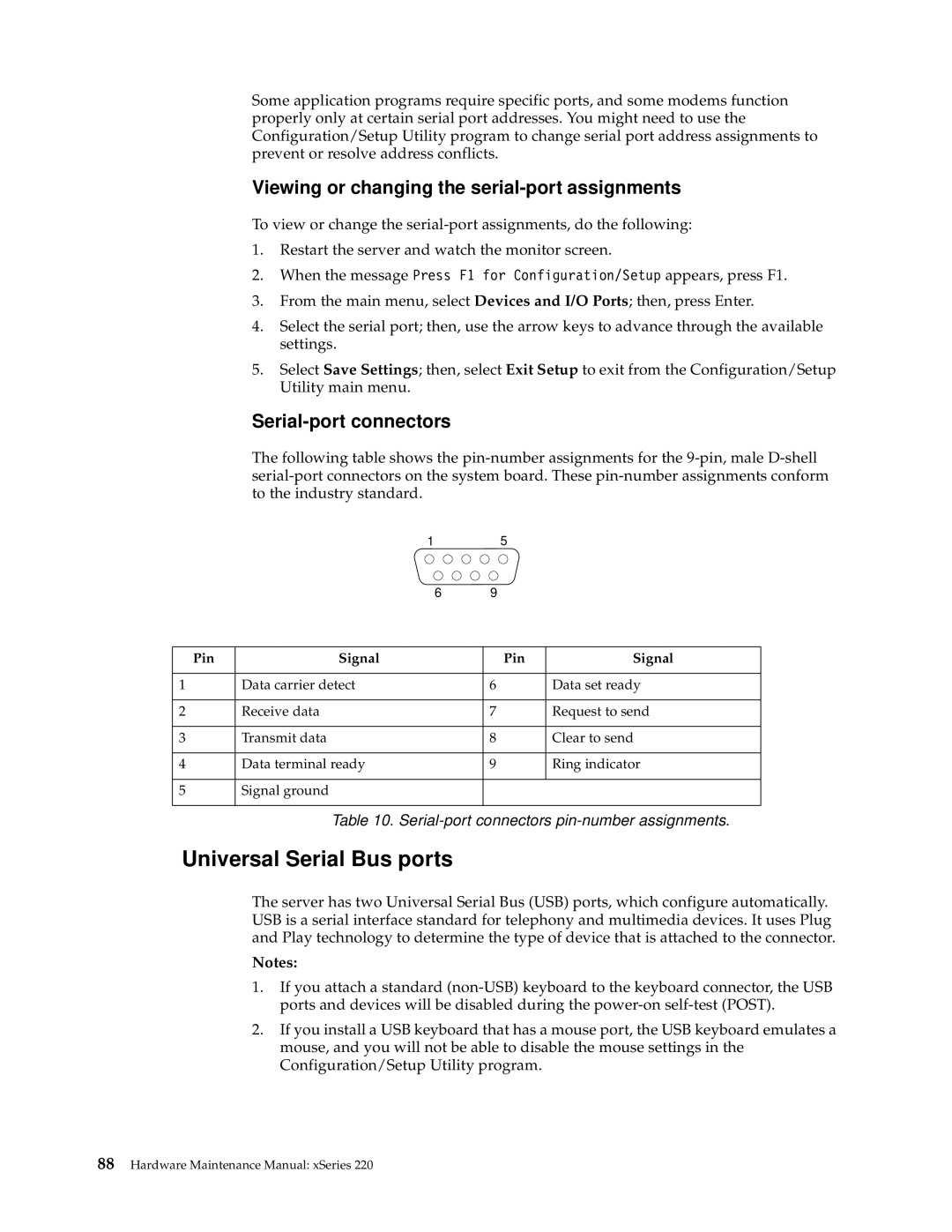
Some application programs require specific ports, and some modems function properly only at certain serial port addresses. You might need to use the Configuration/Setup Utility program to change serial port address assignments to prevent or resolve address conflicts.
Viewing or changing the serial-port assignments
To view or change the
1.Restart the server and watch the monitor screen.
2.When the message Press F1 for Configuration/Setup appears, press F1.
3.From the main menu, select Devices and I/O Ports; then, press Enter.
4.Select the serial port; then, use the arrow keys to advance through the available settings.
5.Select Save Settings; then, select Exit Setup to exit from the Configuration/Setup Utility main menu.
Serial-port connectors
The following table shows the
| 1 | 5 |
|
| 6 | 9 |
|
Pin | Signal | Pin | Signal |
1 | Data carrier detect | 6 | Data set ready |
2 | Receive data | 7 | Request to send |
3 | Transmit data | 8 | Clear to send |
4 | Data terminal ready | 9 | Ring indicator |
5 | Signal ground |
|
|
Table 10.
Universal Serial Bus ports
The server has two Universal Serial Bus (USB) ports, which configure automatically. USB is a serial interface standard for telephony and multimedia devices. It uses Plug and Play technology to determine the type of device that is attached to the connector.
Notes:
1.If you attach a standard
2.If you install a USB keyboard that has a mouse port, the USB keyboard emulates a mouse, and you will not be able to disable the mouse settings in the Configuration/Setup Utility program.
